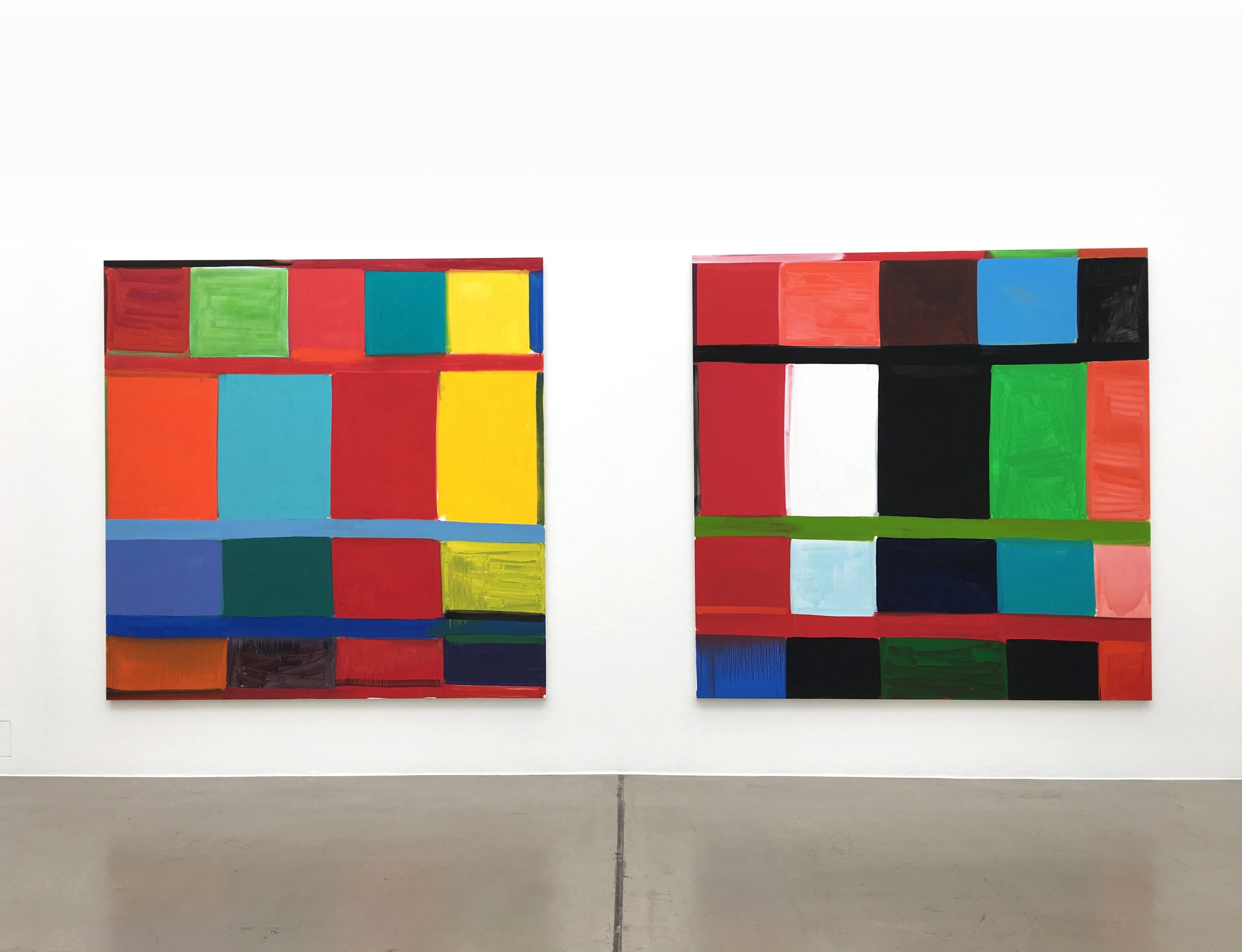Is it art?
I recently had a conversation with one of my studio neighbors Arild Brock, which turned into a short interview about my work. He is very critical of my monochrome paintings. However, I appreciate his doubting questions as it gives me an opportunity to talk about my motivation to produce such minimalistic work.
This is a partial transcript of that conversation.
Studio view with monochrome paintings
Arild: Is it a “Schnaps-Idee”* to make them? You know, I hold the view that many artists know how to make art but have no idea what art to make. I think your monochrome idea leans a bit in that direction.
Miguel: It is not a Schnaps-Idee! By the time I start painting on a body of work, the basic idea behind it has gone through a long development stage. I made the first color studies some ten years ago. At the time, I was making them to understand the medium I was working with, and this is still the case for the studies I make today. But with my monochrome painting I have transitioned from learning how to use oil paint to exploring what is possible in painting.
Color studies, oil on cardboard, bound into a book, 2015
I have a very long list of ideas I would like to realise in painting, probably enough to keep me busy for the rest of my life. But when I started using oil paint, I ran into an endless array of technical difficulties:
I studied design and am very proficient in digital painting and generally comfortable using color as a design element. But I am self-taught in oil painting, or any physical painting medium for that matter. I had this naive idea that I could use what I knew about color from my digital work and would only need a short transition phase. But I soon learned there is enormous complexity in oil painting. From the different physical properties of pigments, to mixing and extending colors, to using various oils, solvents, and other material, to balancing drying times, transparency and thickness of layers in oil paint to create a strong, durable structure in a painting.
By making the monochrome studies, I can focus on specific aspects of painting. This process of isolation allows me to reveal the characteristics of a color, what it looks like, which is not as obvious as it sounds, and how I can use it in future paintings. As it turns out, it is a lot harder than what I expected. The learning of how to use paint turns into an art form in itself.
Arild: So far, I have respected your idea from what you just said. But the amount you are making and claiming them to be completed artworks makes me hesitate.
Miguel: What is art and what is not has always been debatable, and to be honest, I never thought I’d get into a position to explain why I think my art is actually art.
In the last 100 years we’ve seen the rise of many different kinds of abstract art, and not everybody appreciates this kind of painting. I still vividly remember walking into a very well curated salon at the 2017 documenta in Kassel. A friend of mine, standing in front of a work by Stanley Whitney, said:
“I don’t understand why artists keep painting colored squares!”
I laughed, not knowing I would still paint coloured rectangles just a few years later.
Stanley Whitney, installation view, documenta 14
Now, I cannot speak on behalf of other artists and their motivation, but to me, the color studies are a necessary step in developing my skill as a painter. But they have become more than that. Each piece is an exercise in patience and focus, and I believe by doing the work in this state of mind, each monochrome painting retains and reflects this energy.
While much has been done in the field of monochrome painting, to my knowledge, no one has written the name of the paint underneath. As silly as it sounds at first, it has a profound effect:
By reading the name of the color, even someone without any knowledge of the subject is able to make the connection of what they are looking at. A swatch of Iron Oxide Red is a metal that has formed rust- you are looking at the result of a chemical process. Bone Black oil paint is made from charred animal bones- you are looking at the remains of a living organism. I believe that by looking at color in this way, we can form a connection from a completely abstract visual to the material world we live in. It gives a sense of placement, and I like that idea very much.
Iron Oxide Red (39x37/PR101), 2022
Oil and ink on heavy cotton rag paper
Edition of 5 + 2 AP
50 x 40 cm
Arild: Can you say then that your monochromes represent an objective reality which binds us together?
Miguel: Yes, I like to believe that. There are many kinds of experiences that can create a bond between humans, and looking at art and sharing that experience is one of them. The monochrome paintings are unassuming and minimal in appearance. One could easily dismiss them by saying: “there is nothing more to see here”.
And yet they embody a calm energy to contemplate, to appreciate a single, pure color. If you read the name of the color and take a moment, you can mentally take a journey to imagine what it is you are looking at: a piece of the universe we live in, that we are part of. A part of us.
*Schnaps-Idee is a german expression for crazy idea



